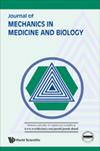一种基于优化三维U-Net模型的心脏图像分割新方法
IF 0.6
4区 医学
Q4 BIOPHYSICS
引用次数: 0
摘要
医学图像分割对医生、患者和整个医疗保健行业都具有重要意义。对医生来说,它提供了更准确的心脏结构信息,有助于改善诊断和治疗决策。对于患者来说,分割技术可以实现个性化的医疗护理,提高治疗效果和满意度。整个医疗保健行业都受益于这项技术的进步,推动了医学科学的发展,并为提高医疗质量和患者福祉做出了贡献。此外,细分在研究和教育中起着至关重要的作用,促进了医学知识的积累和传播。综上所述,医学图像分割的应用对医学领域的进步和患者的福利有着深远的影响。近年来,随着技术的进步和算法的创新,医学图像质量有了很大的提高,分辨率更高,噪声和伪影减少。同时,深度学习技术的应用使得医学图像的自动分析和诊断更加精确和高效。然而,由于医学图像通常存在复杂的结构和多样性,模型在不同数据集上的泛化能力有限,导致分割性能不稳定。考虑到三维U-Net模型具有良好的图像分割性能,本研究在三维U-Net模型的基础上引入了一种改进的空间注意机制,以增强其分割性能。空间注意机制增强了模型的特征提取能力。增强的网络可以在整个全局范围内捕获跨通道和空间维度的特征之间的依赖关系。此外,它可以增强输入特征向量内的任意两个相关特征,从而增强模型的表示能力。通过详细的实验验证,充分证明了该模型的有效性。其在性能和计算效率方面的优势使其成为医学图像分割领域的重大突破,为今后医学图像处理的研究和临床实践提供了坚实的基础。本文章由计算机程序翻译,如有差异,请以英文原文为准。
A Novel Cardiac Image Segmentation Method Using an Optimized 3D U-Net Model
Medical image segmentation holds significant importance for doctors, patients, and the entire health care industry. For doctors, it provides more accurate information about cardiac structures, aiding in improving diagnoses and treatment decisions. For patients, segmentation techniques enable personalized medical care, enhancing treatment outcomes and satisfaction. The entire health care sector benefits from the advancement of this technology, driving the development of medical science and contributing to better health care quality and patient well-being. Additionally, segmentation plays a crucial role in research and education, facilitating the accumulation and dissemination of medical knowledge. In summary, the application of medical image segmentation has profound implications for progress in the medical field and patient welfare. In recent years, with technological advancements and innovative algorithms, medical image quality has greatly improved, with higher resolution and reduced noise and artifacts. Simultaneously, the application of deep learning techniques has made the automatic analysis and diagnosis of medical images more precise and efficient. However, due to the complex structures and diversity often present in medical images, models tend to have limited generalization across different datasets, leading to unstable segmentation performance. Considering the excellent image segmentation performance of the three-dimensional (3D) U-Net model, this study introduces an improved spatial attention mechanism on the basis of the 3D U-Net model to enhance its segmentation performance. The spatial attention mechanism enhances the model’s feature extraction capabilities. The enhanced network can capture dependencies among features across both channel and spatial dimensions in the entire global scope. Additionally, it can strengthen any two correlated features within the input feature vector, thereby enhancing the model’s representational capacity. Through detailed experimental validation, the effectiveness of the proposed model is thoroughly demonstrated. Its superiority in performance and computational efficiency positions it as a significant breakthrough in the medical image segmentation field, providing a strong foundation for future research and clinical practice in medical image processing.
求助全文
通过发布文献求助,成功后即可免费获取论文全文。
去求助
来源期刊

Journal of Mechanics in Medicine and Biology
工程技术-工程:生物医学
CiteScore
1.20
自引率
12.50%
发文量
144
审稿时长
2.3 months
期刊介绍:
This journal has as its objective the publication and dissemination of original research (even for "revolutionary concepts that contrast with existing theories" & "hypothesis") in all fields of engineering-mechanics that includes mechanisms, processes, bio-sensors and bio-devices in medicine, biology and healthcare. The journal publishes original papers in English which contribute to an understanding of biomedical engineering and science at a nano- to macro-scale or an improvement of the methods and techniques of medical, biological and clinical treatment by the application of advanced high technology.
Journal''s Research Scopes/Topics Covered (but not limited to):
Artificial Organs, Biomechanics of Organs.
Biofluid Mechanics, Biorheology, Blood Flow Measurement Techniques, Microcirculation, Hemodynamics.
Bioheat Transfer and Mass Transport, Nano Heat Transfer.
Biomaterials.
Biomechanics & Modeling of Cell and Molecular.
Biomedical Instrumentation and BioSensors that implicate ''human mechanics'' in details.
Biomedical Signal Processing Techniques that implicate ''human mechanics'' in details.
Bio-Microelectromechanical Systems, Microfluidics.
Bio-Nanotechnology and Clinical Application.
Bird and Insect Aerodynamics.
Cardiovascular/Cardiac mechanics.
Cardiovascular Systems Physiology/Engineering.
Cellular and Tissue Mechanics/Engineering.
Computational Biomechanics/Physiological Modelling, Systems Physiology.
Clinical Biomechanics.
Hearing Mechanics.
Human Movement and Animal Locomotion.
Implant Design and Mechanics.
Mathematical modeling.
Mechanobiology of Diseases.
Mechanics of Medical Robotics.
Muscle/Neuromuscular/Musculoskeletal Mechanics and Engineering.
Neural- & Neuro-Behavioral Engineering.
Orthopedic Biomechanics.
Reproductive and Urogynecological Mechanics.
Respiratory System Engineering...
 求助内容:
求助内容: 应助结果提醒方式:
应助结果提醒方式:


